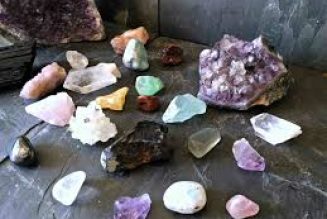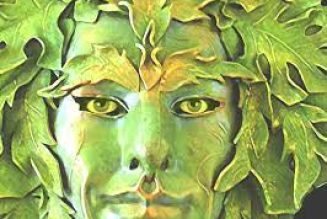
Gryla, a Terrifying Christmas Cannibal with 13 Deviant Sons
In Iceland, 54 percent of the population believe in elves and other paranormal beings. Grýla—who is believed to kidnap bad children and cook them into a soup—plagues them every year, as do her 13 Yule Lads.
The Christmas season is magical, enchanting, and fraught with heinous stories of diabolical supernatural beings. Boughs of holly deck hallways, sugar plum fairies dance inside children’s heads, and an old man forces himself into chimneys around the world after months of tirelessly surveilling children. There are so many wonderful stories that are told during Christmas—like those of reindeer who fly in the sky, or of Krampus, the Christmas demon that beats children with sticks and drowns them in streams. Then there is Grýla, the hideous Icelandic cannibal troll-woman who abducts children and boils them to death.
Descriptions of Grýla vary across time, but she is often depicted as a monstrous female being with hooves. In some stories, Grýla looks like a sheep who walks like a human; in others, she is clearly a troll. Sometimes she has 300 heads, or a beard, or blue eyes on the back of her head. One description portrays Grýla as having 15 tails, together bearing one hundred balloons filled with children.
“She is told to come to town around Christmas time and pick up naughty kids, disobedient kids, and take them to the mountain where she lives,” explains Magnus H. Skarphedinsson, the headmaster of The Elf School, a Reykjavik-based institution devoted to Icelandic folklore. “She cooks and makes a soup of them.”
In Skarphedinsson’s opinion, Grýla is most likely some combination of fact and fiction: “I think the origin of her is somebody saw a mean nature spirit around Christmas in the dark, and that’s where this started, and it’s escalated.”
To be clear, Skarphedinsson firmly believes in elves, hidden people, and other supernatural entities. (The distinction between these two first categories is that elves are small magical beings who look strange and have big ears, whereas hidden people are quite similar to human beings—they tend sheep, keep house, and sow fields, but exist in a dimension that overlaps with our own.) “I’ve met more than 900 people who’ve seen elves and hidden people, and I’ve met five or six people that have seen trolls, and probably one of them has seen Grýla,” Skarphedinsson tells Broadly. His experience with these witnesses has left him “totally convinced” of the existence of these phenomenon.
Skarphedinsson is far from alone in this regard: Belief in mystical beings like Grýla is quite normal in Icelandic culture. As the Atlantic reported in 2013, a 1998 study found that 54 percent of Icelanders believe that elves and hidden people exist. Icelanders are so concerned with supernatural entities, in fact, that civic development will sometimes take these paranormal entities into account. Most famously, there was an eight-year-long debate between the government, environmentalists, and elf believers spanning from 2007 and 2015, when the construction of a new highway threatened to destroy a 50-ton “elf church.” Naturally, the elves won and construction workers uprooted the massive rock to appease them. (According to the Guardian, the threat of displeasing elves is so real that “even non-believers would rather play it safe than risk incurring the wrath.”)
Similarly, many Icelanders fear and respect Grýla, who is an iconic folk figure in the Nordic island country. “I remember how scared we Icelandic kids were of this terrible troll, Grýla—and she still gives me the creeps,” one native put it in an article for Iceland’s largest online travel guide. Indeed, the ogress appears in texts throughout history. In The Origins of Drama in Scandinavia, folkloristic professor and author Terry Gunnell writes that Grýla “was clearly recognized as an ugly troll figure in Iceland at least as far back as the 14th century.”
Stekkjastaur’s only passion in life is to sneak up on sheep and suck on their nipples.
Grýla has remained a staple in Iceland in part because she is the mother of the nation’s version of Santa Claus, the Yule Lads. These 13 troll-like men come to your home sequentially in the 13 days preceding Christmas, and they either give children rotting potatoes or presents.
More importantly, these freaks are each defined by their unique fetishes. For example, the bowl-licker Askaskleikir enjoys hiding beneath children’s beds and licking bowls. Then there is Gluggagægir, charmingly known as the window-peeper. Around Christmas time, this voyeur enjoys sneaking up to windows and watching the people inside. Perhaps worst of all, Stekkjastaur has long, stiff legs and can’t bend his knees. The condition is quite sad, as Stekkjastaur’s only passion in life is to sneak up on sheep and suck on their nipples, which is hard to do without kneeling down.1700s it became illegal for parents to use Grýla to frighten their children. But Skarphedinsson does it anyway: One time he called his home and played a prank on his family by pretending to be a Yule Lad. When his daughter answered the phone, Skarphedinsson told her that his mother Grýla was angry with her for being disobedient. “She hid beneath the bed in the bedroom and she was very good and obedient after that,” Skarphedinsson says








